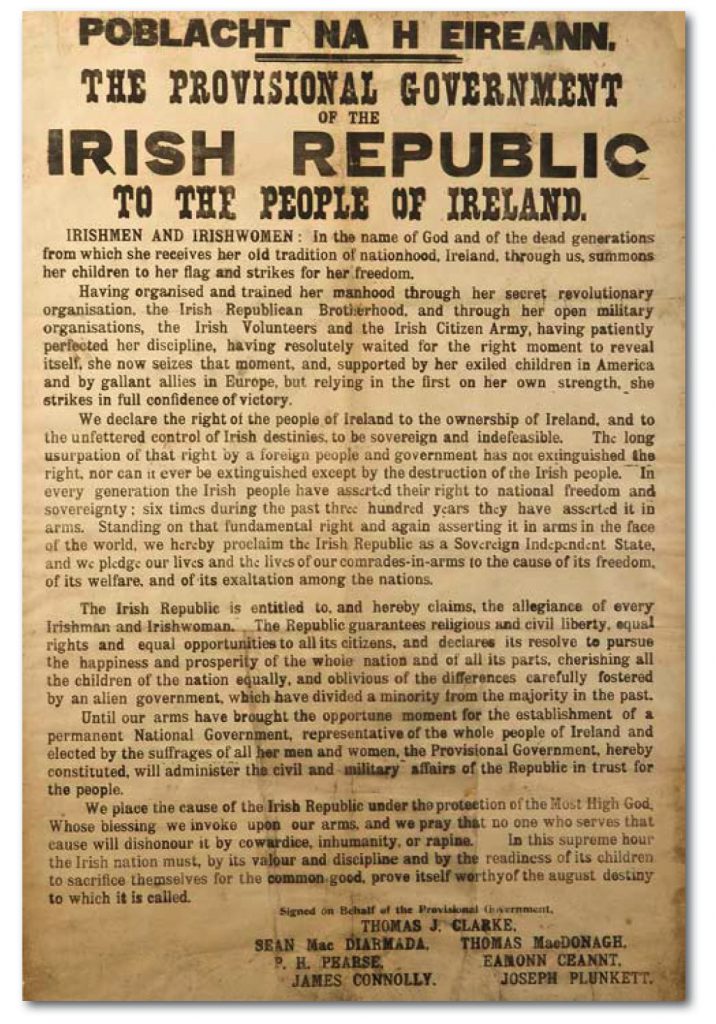This year marks two significant events in the history of Ireland and Indiana.
Indiana celebrates the 200th anniversary of statehood with activities and celebrations all over the state. The marking of the event will culminate with a Bicentennial Gala at the State Fairgrounds in December. There are many related events throughout the year to recognize our 200 years of history.
This year is also a significant milestone in the history of the Republic of Ireland, the 100th anniversary of the Easter Rising in Dublin. Most people don’t know that Ireland as it stands now has only been autonomous since 1922. Until that time, the Irish people in the 26 southern counties remained subjects of British rule. The Irish War of Independence had been fought and won and the Anglo-Irish Treaty was signed. Most of Ireland seceded from the United Kingdom to become the independent Irish Free State. The key pivotal events of 1916 lead to the continuing effort to break from British Rule after centuries of suppression and abuse.
The Easter Rising (Irish: Éirí Amach na Cásca), also known as the Easter Rebellion, was an armed insurrection in Ireland during Easter Week, April 1916. The Rising was launched by Irish republicans to end British rule and establish an independent Irish Republic while the United Kingdom was heavily engaged in World War I. It was the most significant uprising in Ireland since the rebellion of 1798, and the first armed action of the Irish revolutionary period. The Rebellion itself was quickly squelched and many of the rebels lost their lives that day. They did inflict many injuries and death to the British Army called out in response to the actions but it was considered a failure by those who supported the cause.
The consequences that followed the events of that week were the catalyst that caused a majority of the Irish people to join forces to defeat the British. Participants in the rebellion were for the most part teachers, writers, artists and poets. Those who had not perished in the gunfire at the General Post Office were later publicly executed by the British Army. Fifteen rebel leaders were executed including a leader of the rebellion, James Connolly, who was shot after being tied to a stretcher and propped up because he was too wounded to stand himself. These men became martyrs for the cause and incited the Irish like nothing before.
Events to recognize the anniversary of these events have taken place all over Ireland in the last eight months and they continue. So as to never forget the monumental sacrifice of the rebel leaders and what they contributed to the Irish independence the Indy Irish Fest has included exhibits and performances that recognize and celebrate this moment in history.
Join Brian Evans, Kevin Doherty and Tom Sweeney for special performances of “1916, a Terrible Beauty” on Saturday at 3:45 p.m. on the south stage and again at 12:00 p.m. on Sunday. Sponsored by the Milwaukee Irish Festival Foundation.
Listen to Peter Elliott discuss his part in the long running project of identifying the historical significance of Irish Republican Army members and how they relate to the 1916 events. Mr. Elliott will be on stage in the cultural area at on Saturday and Sunday. Times TBD.
Visit the cultural exhibit area to learn more about the uprising and read the proclamation offered to begin that week of revolt.

